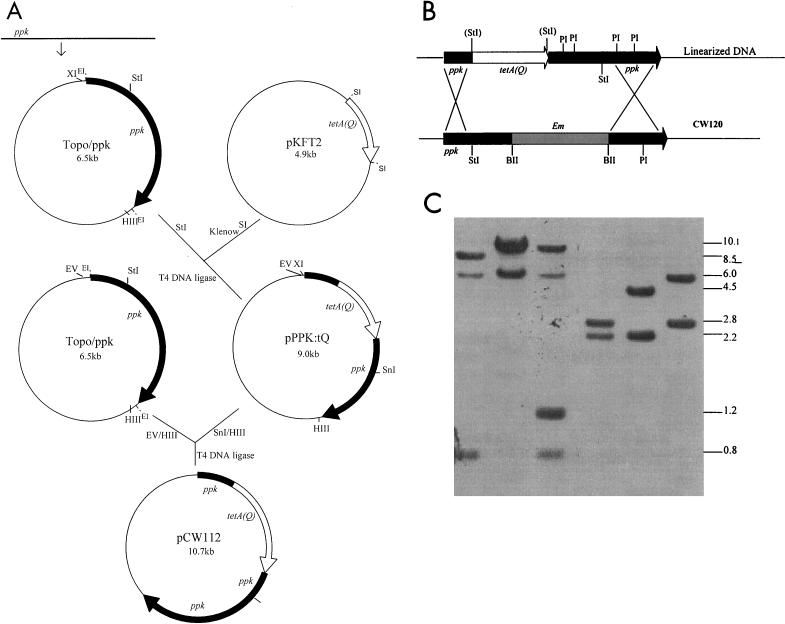FIG. 5.
Strategy for complementation of the ppk-deficient mutant CW120. (A) A 2.4-kb ppk gene fragment, including the 400-bp upstream flanking region, amplified by PCR from P. gingivalis 381 was ligated into the pCR 2.1-TOPO vector. A 2.2-kb tetA(Q) cassette digested with SstI from pKFT2 was blunted and inserted into the ppk gene at the StuI site in the same transcription direction as the ppk gene. The portion of the ppk gene downstream from tetA(Q) was cut out with SnaB I and HindIII. An intact copy of the ppk gene was ligated downstream of tetA(Q) at the SnaB I and HindIII sites of pPPK:tQ. The resulting plasmid, designated pCW112, was linearized with HindIII and electroporated into the ppk-null mutant CW120. (B) The predicted integration of the resulting plasmid pCW112 into CW120. (C) Southern blot analysis of the genomic DNA of P. gingivalis wild-type 381, ppk mutant CW120, and the ppk-complemented strain CW120C. The chromosomal DNA of 381(lanes 1 and 4), CW120 (lanes 2 and 5), and CW120C (lanes 3 and 6) was digested with StuI (lanes 1, 2, and 3) and PstI (lanes 4, 5, and 6), respectively, and probed with a 2.4-kb ppk fragment.

